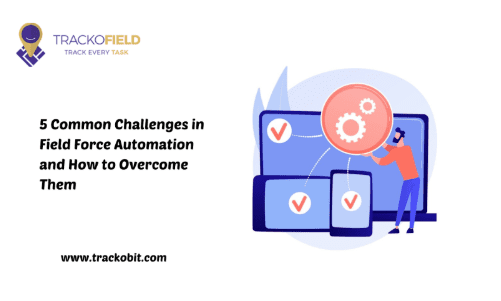Implementing the right field force management strategies can make or break your marketing team. With new automation tools and technologies cropping up constantly, you’re not just managing your field force or can follow the traditional way.
You need field force automation in your workflows through which you can optimize your end-to-end business workflows. Whether you’re a startup or an established organization, implementing a field force automation solution means going beyond basic-level management.
But what are the common challenges that you may face while deploying this innovative solution in your business? How can you overcome them? Find out the details in this blog post!
What Is Field Force Automation?
Field force automation refers to optimizing mobile workforce management. From scheduling to dispatching field activities, field service management software can streamline your complete business operations. But how exactly can you ensure field force automation in your organization? The field force automation system is a comprehensive platform through which you can track and manage your remote employees efficiently.
What Are the Common Challenges And Their Solutions in Field Force Automation?
It is indeed true that every great innovation comes with a few growing pains. Here’s a look at five common challenges businesses face when implementing field force automation and tips to tackle them:
Challenge 1: Resistance to Change From Field Employees
One of the most significant hurdles in implementing a field force automation system is resistance from field employees. Many field force executives are accustomed to traditional methods of working. They prefer to use legacy systems like manual data entry and paper-based reporting. Therefore, introducing new tools and processes can lead to skepticism. Your mobile workforce may fear job displacement and lack the willingness to adapt to it.
Solution: The best way to overcome this challenge is to clearly explain the benefits of field force automation solutions to your field employees. Moreover, ensure that you provide hands-on training sessions to help employees understand how it works clearly. Make the training interactive and customized to the specific roles of each executive.
Challenge 2: Integration with Existing Systems
Many organizations already have legacy systems for field force management. Henceforth, integrating field force automation solutions with these systems can be complex and time-consuming. It often leads to data silos and compatibility issues.
Solution: You can solve this problem by deploying a field force automation system that offers seamless integration with your existing systems. Compare different platforms to select the one with open APIs or pre-built connectors. What’s more? Conduct rigorous testing before rolling out the software in your business. It will ensure that data flows correctly between platforms and there are no disruptions to operations.
Challenge 3: Data Security and Privacy Concerns
Field force automation often involves collecting, storing, and sharing sensitive data of customers and employees. This raises concerns about data security and compliance with privacy regulations for every organization.
Solution: To overcome this critical challenge, make sure that you implement software that provides robust security measures. Additionally, make sure that you educate your field employees on best practices for handling sensitive data.
Challenge 4: High Initial Costs and ROI Concerns
Implementing a field force automation system can require a significant upfront investment. You might need to spend a significant amount on maintenance and training of the software. The result? This can be a barrier to adoption for small and medium-sized businesses. There may be additional concerns about whether the investment will deliver a strong return on investment (ROI).
Solution: It is recommended to begin with a pilot program to test the field force automation system on a smaller scale. This allows you to demonstrate its value before scaling up. Ensure that you identify areas where field force automation can deliver immediate benefits. Understand whether you need to reduce travel time or improve order accuracy while deploying the software.
Challenge 5: Real-Time Communication and Connectivity Issues
Field force automation relies heavily on real-time communication and data exchange between field employees and the central office. However, poor connectivity in remote or rural areas can disrupt operations and lead to delays or errors.
Solution: Choose a remote employee monitoring software that offers offline functionality. Ensure that the software allows your field employees to work without an internet connection and sync data once they are back online. Moreover, use Internet of Things (IoT) devices and GPS tracking to monitor field operations in real-time even in low-connectivity areas.
The Last Words!
Field force automation has the potential to transform how businesses manage their field operations. However, deploying field force automation solutions is challenging for businesses. An organization can overcome all the major challenges just by choosing the best software for your business. TrackoField’s field force automation system is an advanced technology that is preferred by top organizations. Try the software by yourself, book your free trial today!

As the editor of the blog, She curate insightful content that sparks curiosity and fosters learning. With a passion for storytelling and a keen eye for detail, she strive to bring diverse perspectives and engaging narratives to readers, ensuring every piece informs, inspires, and enriches.










